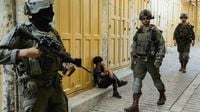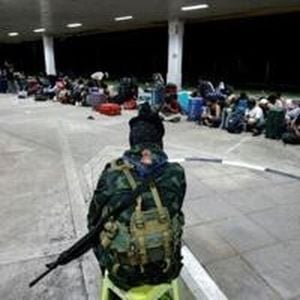On October 28, 2025, the already volatile landscape of the Middle East was shaken once more as Israeli forces launched a deadly airstrike and raid in the Jenin area of the occupied West Bank. According to the Tehran Times, the operation targeted the village of Kafr Qud, west of Jenin, and resulted in the deaths of three Palestinians after hours of gunfire and explosions. Local witnesses described a tense and terrifying scene: Israeli occupation forces, backed by bulldozers and armored vehicles, surrounded a family home before unleashing the assault. For many in the region, it was a grim reminder that the West Bank, long overshadowed by the conflict in Gaza, is now a second front in a conflict that seems to escalate with each passing week.
The significance of this event goes beyond the immediate tragedy. The airstrike in Kafr Qud is part of what the Tehran Times describes as a broader strategic shift by the Israeli military. Airstrikes inside the West Bank, once a rarity, have become increasingly common, signaling a willingness by Israeli authorities to use heavy weaponry and aerial bombardment in densely populated Palestinian areas such as Jenin and Nablus. The paper argues that this change reflects both frustration at the growing capacity of Palestinian resistance groups and a political turn toward annexation under what it calls an extremist Israeli government that rejects any form of Palestinian statehood.
This new approach is not limited to airstrikes. Earlier on the same day, Israeli forces conducted a wave of raids across Nablus, al-Khalil (Hebron), Ramallah, and Jericho, arresting dozens of Palestinians—including former prisoners—and wounding several others. Bulldozers destroyed farmlands near al-Khalil, and, according to the Tehran Times, settlers emboldened by political support from ministers like Itamar Ben-Gvir and Bezalel Smotrich escalated violent attacks on Palestinian farmers during the olive harvest. For many Palestinians, these incidents are not isolated; they are part of a systematic campaign to make life untenable and to accelerate the process of annexation.
Statistics from the United Nations, cited by the Tehran Times, paint a deeply troubling picture. Since the beginning of 2025, Israeli occupation forces have killed at least 40 Palestinian children in the West Bank. Jenin alone has seen more than 68 deaths this year—nearly a third of all fatalities across the occupied territories. The UN has also documented over 90 attacks on schools and more than 80 settler assaults since early October, many of them targeting olive harvesters. Human rights experts warn that these patterns point to a concerted effort to drive Palestinians from their land and to entrench Israeli control.
The roots of this escalation are complex, but the Tehran Times argues that the growing armed resistance in the West Bank is a direct response to ongoing occupation, relentless settlement expansion, and the absence of any meaningful political prospects. The newly emerging resistance networks in the northern West Bank are predominantly composed of young Palestinians whose formative years have been shaped by continuous military rule, nightly raids, and the collapse of peace initiatives. For these young people, resistance is not just a political statement—it is a response to a lifetime of insecurity and a future that seems increasingly bleak.
As the world’s attention remains riveted by the devastation in Gaza, the West Bank is quietly becoming a second front in the conflict. The Tehran Times observes that the Israeli regime’s drive for territorial control and the Palestinians’ determination to resist occupation are colliding more violently than at any point in recent memory. The growing use of airstrikes and heavy weaponry is turning what was once a simmering conflict into open warfare, erasing any remaining illusion that the occupation is temporary or reversible.
Against this backdrop, the role of the United States looms large. Former Egyptian President Anwar Sadat once famously remarked that the United States "holds 99 percent of the cards in the Mideast conflict." As reported in an October 28, 2025 article, this statement underscores the immense influence Washington wields in the region. Yet, as the article notes, "statements are one thing, and reality is another." Despite its power, the United States has not been able to bring the conflict under control or to broker a lasting peace. The events in Jenin and beyond serve as a stark reminder that holding all the cards does not necessarily translate into shaping the outcome on the ground.
Indeed, the latest escalation in the West Bank has exposed the limits of American influence and the deepening complexity of the conflict. As Israeli forces intensify their operations and settler violence continues with apparent political backing, the U.S. faces mounting pressure to respond. Yet, as history has shown, even the world’s most powerful superpower can find itself unable to dictate terms or enforce solutions in a region as fraught and contested as the Middle East.
For Palestinians, the situation is growing more desperate. The Tehran Times reports that the systematic destruction of farmlands, the targeting of schools, and the violence against olive harvesters are not just collateral damage—they are part of a deliberate strategy to undermine Palestinian resilience and to pave the way for annexation. Human rights advocates warn that unless there is a dramatic change in policy and approach, the cycle of violence will only intensify, with ever greater costs for civilians on both sides.
The international community, meanwhile, remains divided and often paralyzed. While the United Nations continues to document abuses and issue warnings, concrete action has been limited. The focus on Gaza, though warranted by the scale of the humanitarian crisis there, has left the West Bank dangerously neglected. As the Tehran Times puts it, the growing use of airstrikes in the West Bank "shows that the Israeli regime’s military operations... are turning into open warfare, erasing any remaining illusion that the Zionist occupation is temporary."
In the end, the events of October 28, 2025, may come to be seen as a turning point—a moment when the West Bank moved from simmering unrest to outright conflict. Whether this escalation marks the beginning of a new phase in the Israeli-Palestinian conflict or simply another tragic chapter remains to be seen. What is clear is that the cards, no matter who holds them, are being played in a game where the stakes could not be higher, and the outcome is anything but certain.




